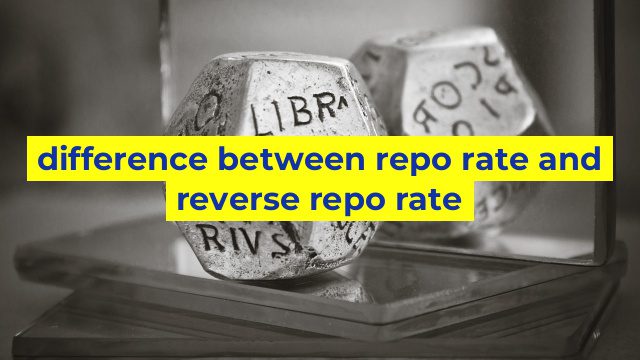Understanding the Difference between Repo Rate and Reverse Repo Rate
The Reserve Bank of India (RBI) is responsible for determining the monetary policy of the country. Two crucial tools through which RBI regulates the inflation and liquidity of the economy are the repo and reverse repo rates. These rates are set by RBI to control the cash flow in the market, impacting the borrowing and lending rates of banks.
What is Repo Rate?
Repo rate, also known as the repurchase rate, is the interest rate at which RBI lends money to commercial banks in the event of a shortfall in funds. In Repo, the central bank buys Securities from the bank with an agreement to sell them back later at a higher price. The difference in prices acts as an interest rate return for the central bank.
Whenever RBI reduces the repo rate, it becomes less expensive for banks to borrow money from it, and this stimulates economic growth by increasing credit flow in the economy. A higher repo rate indicates the tightening of monetary policy, which means the cost to borrow funds for the banks increases, reducing the money supply in the market.
What is Reverse Repo Rate?
Reverse repo rate is the opposite of the repo rate. It is the interest rate charged by the RBI when banks lend their surplus money to it. It is also known as the repurchase rate of securities sold to banks. In reverse repo, banks sell securities to RBI with the commitment to repurchase them afterwards.
Whenever RBI increases the reverse repo rate, banks become motivated to park their surplus funds with the central bank since they will receive a higher return, rather than lending it to other banks or other sectors of the economy, leading to contraction in the money supply.
Key Differences between Repo Rate and Reverse Repo Rate
The primary objective of both repo & reverse repo rate is to regulate the economy’s liquidity and inflation. The following points highlight the differences between the two rates:
1. In Repo Rate, RBI lends funds to commercial banks, whereas in Reverse Repo Rate, commercial banks lend their surplus funds to RBI.
2. A lowered Repo Rate encourages banks to borrow more money at a lower interest rate, whereas an increased Reverse Repo Rate encourages banks to deposit their surplus funds with the RBI since it offers a more lucrative rate.
3. Repo Rate acts as an incentive to make funds available in the economy, while Reverse Repo Rate is a tool to enable banks to profit on their surplus funds.
Conclusion
Repo rate and reverse repo rate policies have a significant impact on the economy, particularly on the cost of borrowing and lending in the country. The RBI uses these rates to control the money supply in the market, and consequently, the inflation/deflation rates. Understanding the difference between these rates is essential for banks and financial institutions as they have a significant effect on the investment made by investors, borrowers, and lenders in the economy.
Table difference between repo rate and reverse repo rate
| Repo Rate | Reverse Repo Rate |
|---|---|
| It is the interest rate at which banks borrow money from the RBI. | It is the interest rate at which the RBI borrows money from banks. |
| It is used to control inflation by making it expensive for banks to borrow money. | It is used to control liquidity in the market by making it attractive for banks to lend money to the central bank. |
| It is higher than the reverse repo rate. | It is lower than the repo rate. |
| Currently, the repo rate in India is 4.00%. | Currently, the reverse repo rate in India is 3.35%. |

